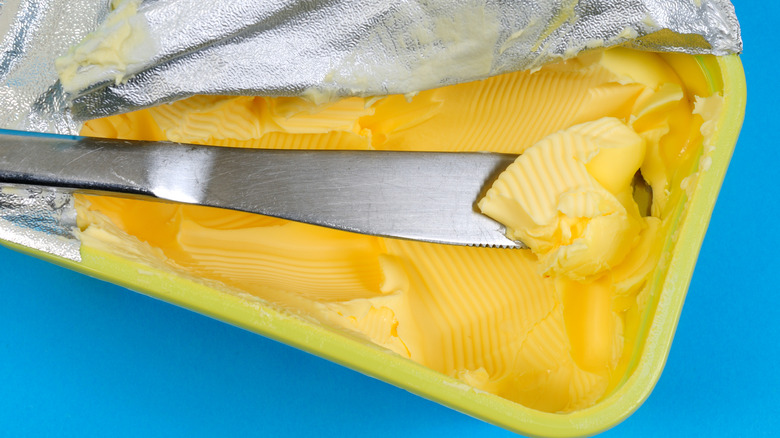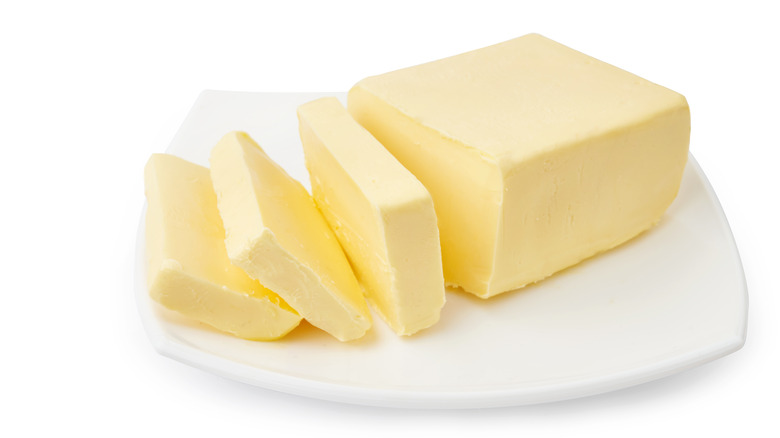Why Margarine Is Yellow Despite The Government's Best Efforts
Today we take it for granted that margarine is yellow. Many of us assume that this is just how it's always been, but it wasn't always that way. Competition can be fierce when it comes to gaining a foothold in the food market, and established industries don't generally react favorably to others encroaching on their profit share.
When margarine initially arrived on the scene in 1873 it was marketed as a less expensive substitute for butter. This sounds like a great idea if you're from a low-income family and you need to pinch pennies anywhere you can. But margarine, normally white in color when processed, was intentionally dyed yellow like butter, which dairy producers immediately perceived as a threat to their bottom line, via National Geographic.
If you wielded power and influence as the dairy farming industry most certainly did, you didn't just sit back and complain about others playing the game well — you used your political clout to change the rules and make it harder for them to win. They employed the tried and true tactic of lobbying state and national legislators against the manufacture and marketing of margarine, persuading some statehouses to enact laws to alter the color of margarine so it wouldn't resemble butter. According to National Geographic, the anti-margarine rhetoric got pretty heated and hyperbolic at times, with opponents even claiming it threatened the culture at the time Propaganda about margarine's ills and butter's benevolence spread like Country Crock on toast, according to Fee.
Waging a war on margarine
By 1898 dairy producers had succeeded in convincing 26 states to regulate margarine, most often through "anti-color laws" that prohibited using the color yellow for margarine products, according to Smithsonian Magazine. A handful of states even banned the manufacture and sale of margarine completely. In what must have seemed a particularly humorous outcome to the pro-butter wing, a few states even passed laws (later overturned by the Supreme Court) requiring that margarine could be sold only in the color pink, per National Geographic.
Prior to that in 1886, Congress enacted the Oleomargarine Act which, while not restricting the coloring of margarine, did levy a two cents per pound tax on the dairy industry's nemesis. The act didn't have the intended effect due to the burdensome inspection process, so further steps were taken, per Smithsonian Magazine.
In 1902, the federal government laid the hammer down, adding an amendment to the Oleomargarine Act that levied a 10-cent tax specifically targeting "artificially colored" margarine and dropping the tax on uncolored products. This time the impact on margarine production was swift and significant — but people wanted and expected their margarine to be yellow.
Margarine manufacturers had a trick up their sleeve to combat the legal obstacles erected to impede their progress. They got around the law by including a packet of yellow coloring dye with the white margarine that consumers could add at home. The idea proved successful, and margarine sales improved. As margarine's popularity continued through World War II and beyond, Congress ultimately repealed the Oleomargarine Act in 1950.

